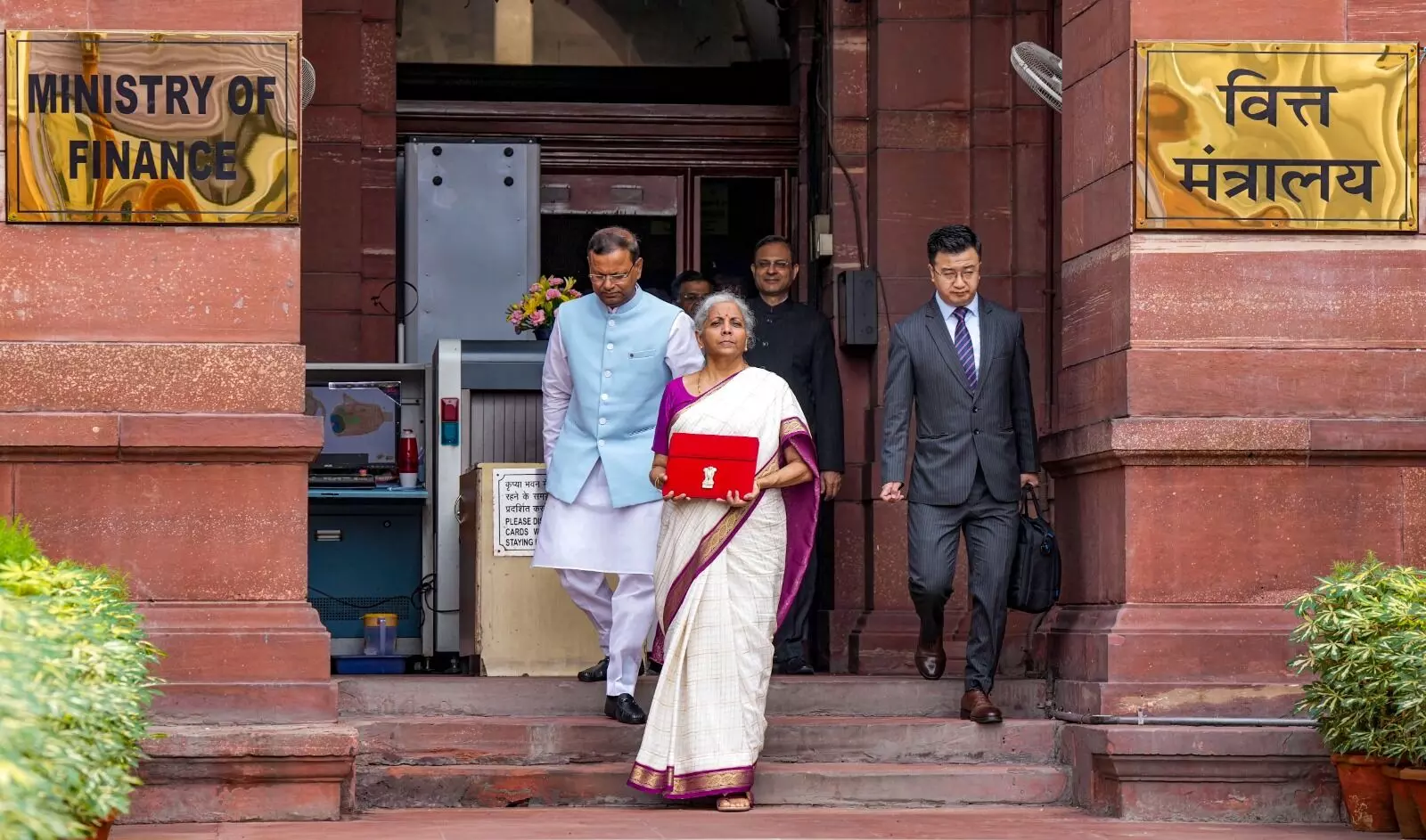A foundation for development
The Union Budget 2024-25 aims to realise a Viksit Bharat by 2047 through fiscal discipline, infrastructure investment, support to MSMEs, rural development, employment generation etc.

Union Finance Minister Nirmala Sitharaman presented the first Budget of Modi 3.0, largely an extension of the interim Budget, aimed at realising the vision of Viksit Bharat by 2047. In line with this vision, the central government adopted fiscal discipline and invested strategically in capital expenditure, prioritising long-term economic growth through investment in infrastructure, rural development, employment and skilling.
India's journey towards becoming a developed nation hinges significantly on improved infrastructure, and it is evident in the continued push the government has been giving to this sector for the past few years.
Capital expenditure and infrastructure spending have been the hallmark of this government. The government has continued to invest in the economy through infrastructure creation and have maintained this trend in the current Budget as well.
The central government's move to keep its capex spending unchanged at 3.4 per cent of the GDP amounting to Rs 11.11 lakh crore along with a provision of Rs 1.5 lakh crore to states as long-term interest free loan will aid infrastructure development and will have a multiplier effect across various sectors. From cement, steel, and construction equipment to power, telecom and logistics, these sectors stand to benefit significantly from this allocation.
The comprehensive plan called ‘Purvodaya’ will be put in place to foster all-round development in Bihar, Jharkhand, West Bengal, Odisha and Andhra Pradesh. This initiative will spur economic activities through development of new roads, airports, medical colleges and sports infrastructure.
The Phase IV of the Pradhan Mantri Gram Sadak Yojana (PMGSY) will be launched to provide all-weather connectivity to 25,000 rural habitations. With this, the government aims to significantly improve rural infra and accessibility.
The central assistance of Rs 2.2 lakh crore under the PM Awas Yojana-Urban 2.0 will address the housing needs of the urban poor and middle class families. It will not only provide a roof over the heads of millions of Indians but also boost growth in the real estate sector, creating jobs and driving economic activity. The central assistance over the next five years will help boost demand for housing finance and the announcement of an interest subsidy scheme for urban housing will make loans more affordable, helping many people to fulfil their housing dreams.
This year, to facilitate employment and skilling, the Finance Minister announced a PM package of 5 schemes with an allocation of Rs 2 lakh crore. These schemes will benefit the first time employees and create new job opportunities by providing support to employers as well.
Other thrust areas of the Budget 2024 were Micro, Small, and Medium Enterprises (MSMEs) and labour-intensive manufacturing sectors. Often referred to as the backbone of the economy, the MSME sector has received a much-needed boost in this Budget. With an allocation of over Rs 22,000 crore for MSMEs, including new cluster and technology centres, the Budget holds the potential for significant growth and innovation across startups, artificial intelligence, and job creation. The increase in the Mudra loan limit to Rs 20 lakh in the union Budget will facilitate access to credit for small businesses, allowing them to expand operations, invest in new technologies, and enhance competitiveness.
The focus on manufacturing is critical for India’s ambition to become a global manufacturing hub. The Budget's initiatives to support the MSME sector will have a ripple effect on the manufacturing industry. By facilitating access to credit and providing financial guarantees, the government is aiding manufacturers to invest in new technologies and expand operations. This will not only enhance domestic manufacturing but also enhance India’s export potential, contributing to a more balanced trade deficit.
In a nutshell, it is a visionary and an inclusive Budget that lays the groundwork for a developed India by 2047. The focus on infrastructure, the MSME sector, and manufacturing is a clear indication of the government’s commitment to creating a conducive environment for businesses, driving economic growth, generating jobs and improving the quality of life for people.
The writer is President, ACE-Action Construction Equipment Ltd. Views expressed are personal



